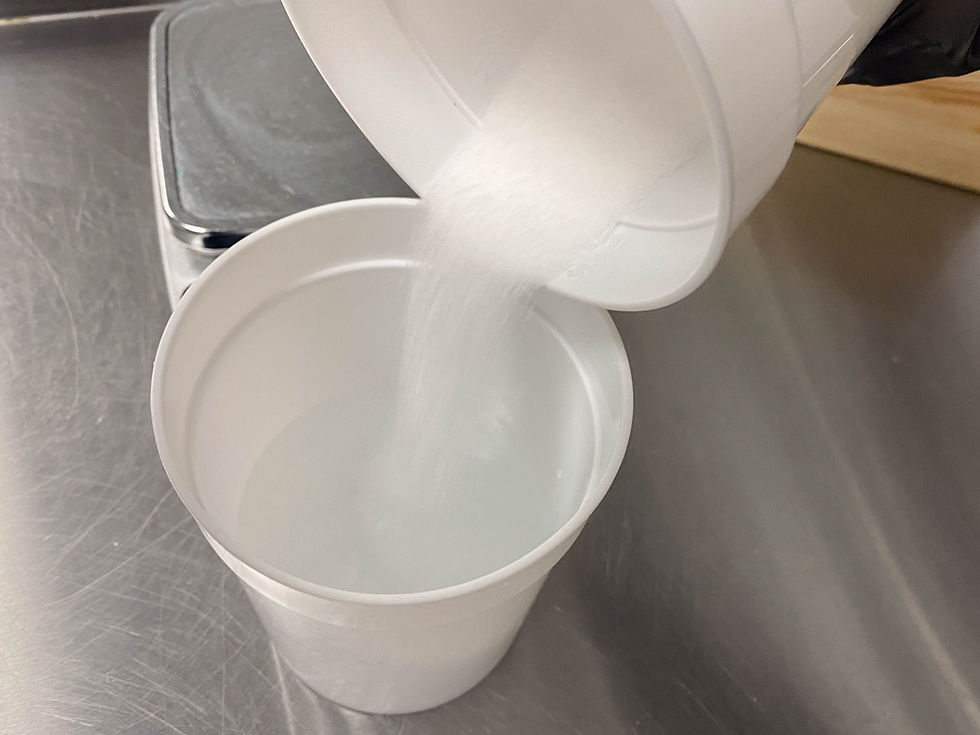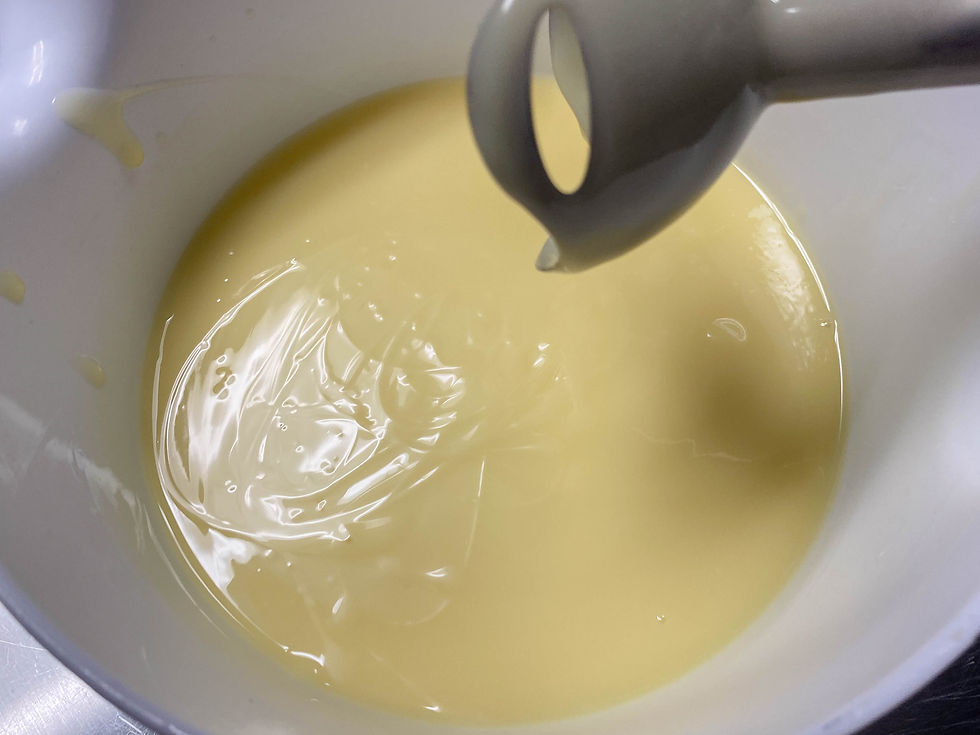The Beginner’s Guide to Making Cold Process Soap with Recipe
- Charmeas Headen

- Jul 3, 2023
- 4 min read
Updated: Feb 28
Have you ever wanted to make your own cold process soap? It may seem daunting at first, but with the right materials and a bit of practice, anyone can make quality cold process soap! In this blog post, we’ll break down the basics of making cold process soap from scratch.

Step 1: Gather Your Materials
First, you’ll need to gather all the necessary items for your soap-making project.
You will need a digital scale, a soap mold, a stick blender, a thermometer, and lye safe mixing bowls and utensils. You will also need ingredients like lye, distilled water, solid oils (like coconut or palm oil), liquid oils (like olive oil or castor oil), essential oils or fragrance oils if desired, and any additional ingredients like herbs, micas, and clays. Make sure to use proper protective gear like goggles and gloves when handling lye. Please check out our article on lye safety or watch this video before making your first batch of soap.
Step 2: Mix Your Lye Solution
The next step is mixing your lye solution. Using a lye safe container, measure out your lye using a digital scale. Next, measure out the distilled water in a separate lye safe container. Once both are measured out, carefully pour lye crystals into the distilled water—never add water to lye! Add the lye crystals slowly while stirring continuously until all the lye has dissolved into the water. Once again, be sure to wear safety goggles, gloves and clothing that covers your arms and legs, as lye is caustic and can cause serious burns when handled improperly. Additionally, always mix your lye solution in a well ventilated area free of pets, children, or those that need supervision.

Always pour your lye into the water. Here, I am using polypropylene cups from Dollar Tree as my lye safe containers.
Step 3: Measure Out Your Oils
While the lye solution cools, in a separate heat-safe container, measure out your solid and liquid oils. Heat this mixture until the solid ingredients are fully melted. In a small container, measure out your fragrance oil or essential oil and set aside.

Step 4: Create Your Soap Mixture
Once your oil mixture and your lye solution are both in the 110-120 degrees Fahrenheit range, it’s time to make soap! Start by slowly pouring your cooled off lye solution into your oils and mix with a stick blender/immersion blender, making sure to avoid introducing air bubbles. Blend for about 20 seconds or until the oil and lye solution are mixed together then add any fragrances, herbs, clays, or colorants you want to use. Begin mixing again and keep blending until the mixture reaches a trace, which is when it thickens and leaves a trail on the surface.

At this point, the mixture has formed an emulsion, meaning that the lye solution and oil mixture can no longer be separated.

You can test trace by drizzling some soap mixture over itself. This mixture has a medium trace.
Step 5: Pour the Mixture into the Mold
Pour the mixture into the mold, making sure to remove any air pockets by tapping the mold gently on a hard surface. Then, cover the mold with the lid or cardboard to insulate the soap, allowing it to set for 24-48 hours.

Step 6: Cut and Cure the Soap
Once the soap has set, remove the soap from the mold and cut it into bars with a knife or a soap cutter. Then, place the bars onto a drying rack and let them cure for 4-6 weeks. During the curing process, the soap will harden, and the chemical reactions will complete, making it safe to use.

Making cold process soap requires patience but once you understand how each ingredient works together it becomes easier over time. As you become more experienced, you can experiment with different ingredients and techniques. Remember to store your soap in a cool and dry place and enjoy your beautiful and personalized soaps. Happy soap making!
Recipe
Ingredients
Directions
|
Download the SoapCalc recipe here





Kommentarer